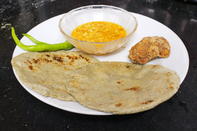
How to Eat Pearl Millet
Pearl millet is a nutritious cereal that is high in zinc, vitamins B and A. It has three times more iron and five times more calcium than maize and also contains potassium, phosphorus, magnesium, zinc, copper and manganese.
The grain of pearl millet is higher in fat and protein 9% than most other cereal grains. In feeding trials in India, pearl millet was shown to be more nutritious than rice and wheat. Flour is produced from millet in a two-step process. The grain is first ground with water to produce a sticky mass, and then dried and ground to produce flour.
This flour is used for porridge or as an ingredient in traditional dishes such as couscous and flatbreads. In India, pearl millet flour is used to make unleavened bread called chapati. The grains are also popped like popcorn (with a toasty flavour) and the green seedheads roasted and eaten like vegetables in some regions. Millet is also used as a malt for beer.
During the malting process, the millet grain sprouts to about 25 mm, changing starches to sugars. The sprouted grain is then sun-dried and ground into a coarse flour.
This flour is then mixed with water and left to ferment to produce beer. Pearl millet can be malted instead of sorghum malt in the brewing of opaque beer but the small size of the grain is a disadvantage in large-scale malting plants.
Pearl Millet as Animal Feed
Pearl millet is well-suited for use as a green fodder for livestock as it is quick-growing, has succulent leaves, can be cut repeatedly and tillers very freely. Tillering is the developing of shoots that produce a head of grain.
Pearl millet pasture can be grazed when 40 - 50 cm high (from 40 - 50 days after seeding), but should not be grazed below 15 - 30 cm. Rest pastures for 5 weeks before re-grazing. Dry matter yields can range from 0.25 - 3 t/ha (in semi-desert climates) to 27 t/ha and even 40 t/ha, under ideal conditions. When feeding pearl millet grains to animals it should be finely ground.
Coarse grinding can cause the hard hull to splinter, resulting in internal irritation in cattle and pigs. For cattle, pearl millet grain appears to be superior to sorghum but inferior to maize in feeding value. Unground pearl millet can be fed to laying hens while pigs fed pearl millet were found to reach slaughtering weight 10 days earlier.
By Marinda Louw